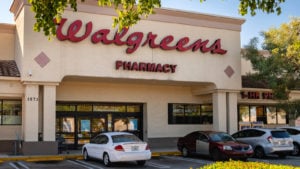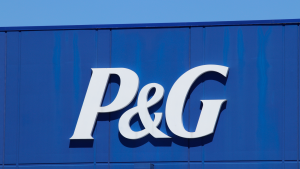Many view the 30 stocks that comprise the Dow Jones Industrial Average as safe, solid “blue-chip” stocks that will never drop a great deal. For example, the business news company Kiplinger wrote: “The Dow Jones Industrial Average comprises 30 blue-chip stocks that are tops in their industries.”
But, as often occurs, reality and conventional wisdom are two very different things. In this case, a few of the Dow stocks are facing litigation that’s likely to decimate their balance sheets, while a few others are tremendously overvalued because they have been seen as “safe havens” by investors who believe that a recession is imminent. The former group of stocks will probably sink as their issuers’ legal troubles greatly intensify, and the latter set of equities will likely retreat sharply as many more investors realize that a recession is not likely to occur anytime soon.
In this column, I will present three Dow stocks to sell, including two in the “dangerous litigation” category” and one in the “overvalued staples stock” group.
Johnson & Johnson (JNJ)

Johnson & Johnson (NYSE:JNJ) is facing very expensive litigation over its talcum powder that allegedly caused thousands of its customers to develop cancer.
JNJ tried to deal with this issue by creating a subsidiary, assigning responsibility for dealing with the lawsuits to the subsidiary, and having the subsidiary declare bankruptcy.
But two judges have declined to allow JNJ’s subsidiary to declare bankruptcy. Meanwhile, before the second judge ruled, JNJ had already increased its settlement offer to $8.9 billion, “more than four times its offer in 2021,” Yahoo Finance reported. JNJ reported that only 60% of plaintiffs are willing to take that settlement, well below the 75% that must ratify any deal for it to take effect.
Given these points, it looks like JNJ will have to offer, in a best-case scenario, around $12 billion to dispense with the litigation.
As of the end of Q2, JNJ had total debt of $45.6 billion and cash of $28.5 billion. Moreover, its net change in cash was -$360 million, and $502 million in 2022 and 2021 respectively.
I’m not a financial expert, but I believe that JNJ will ultimately have to choose some combination of slashing its dividend, which cost over $11 billion annually, a credit-rating downgrade, raising more debt, and issuing additional stock. All of those scenarios will likely cause JNJ stock to sink sharply.
And until the litigation is over, the shares are unlikely to climb much and could very well sink a great deal if JNJ suffers more setbacks in court.
Walgreens Boots Alliance (WBA)

Like JNJ, Walgreens (NASDAQ:WBA), which is being sued over its role in the opioid crisis, is facing very expensive litigation. But WBA’s outlook is much more onerous than that of JNJ.
As I noted in an August column, the company:
“…agreed to pay $500 million to New Mexico and finalized a settlement with the state of California for $5.7 billion. This followed an agreement in May to pay $230 million to the city of San Francisco and $683 million to Florida a year before that.”
Additionally, the firm, along with CVS (NYSE:CVS), will shell out a combined $17.3 billion to 18 states as part of a settlement deal. And as of the end of Q2, the pharmacy chain had only $970 million of cash and a huge $37.4 billion of debt.
Put it all together and WBA looks headed for huge problems, including massive new share sales, asset sales that will meaningfully cut its top and bottom lines, and credit-rating cuts.
As a result, I’m not surprised that the company’s CEO abruptly resigned on Sept. 1, giving it another big headache to deal with.
Given all of these points, WBA is clearly one of the top Dow stocks to sell.
Procter and Gamble (PG)

Procter & Gamble (NYSE:PG) is one of the drastically overvalued staples stocks that I discussed in the introduction to this column. Specifically, the shares have a forward price-earnings ratio of 24, well above the stock market’s historical average price-earnings ratio of 16 and roughly in-line with its current P/E ratio.
That’s despite the fact that, in its last fiscal year, PG’s top and bottom lines both climbed a paltry 2%.
And P&G sells staples items, such as toothpaste and laundry detergent. The overall demand for these items will almost definitely not suddenly surge because almost everybody already regularly uses them. And because they are relatively easy to make and PG does not, of course, have patents on them, the company faces a great deal of competition.
As I noted in the introduction to this column, PG has a high valuation primarily because of way overdone fears about a recession. As worries about such a scenario continue to fade, PG stock is likely to follow suit.
On the date of publication, Larry Ramer did not hold (either directly or indirectly) any positions in the securities mentioned in this article. The opinions expressed in this article are those of the writer, subject to the InvestorPlace.com Publishing Guidelines.
